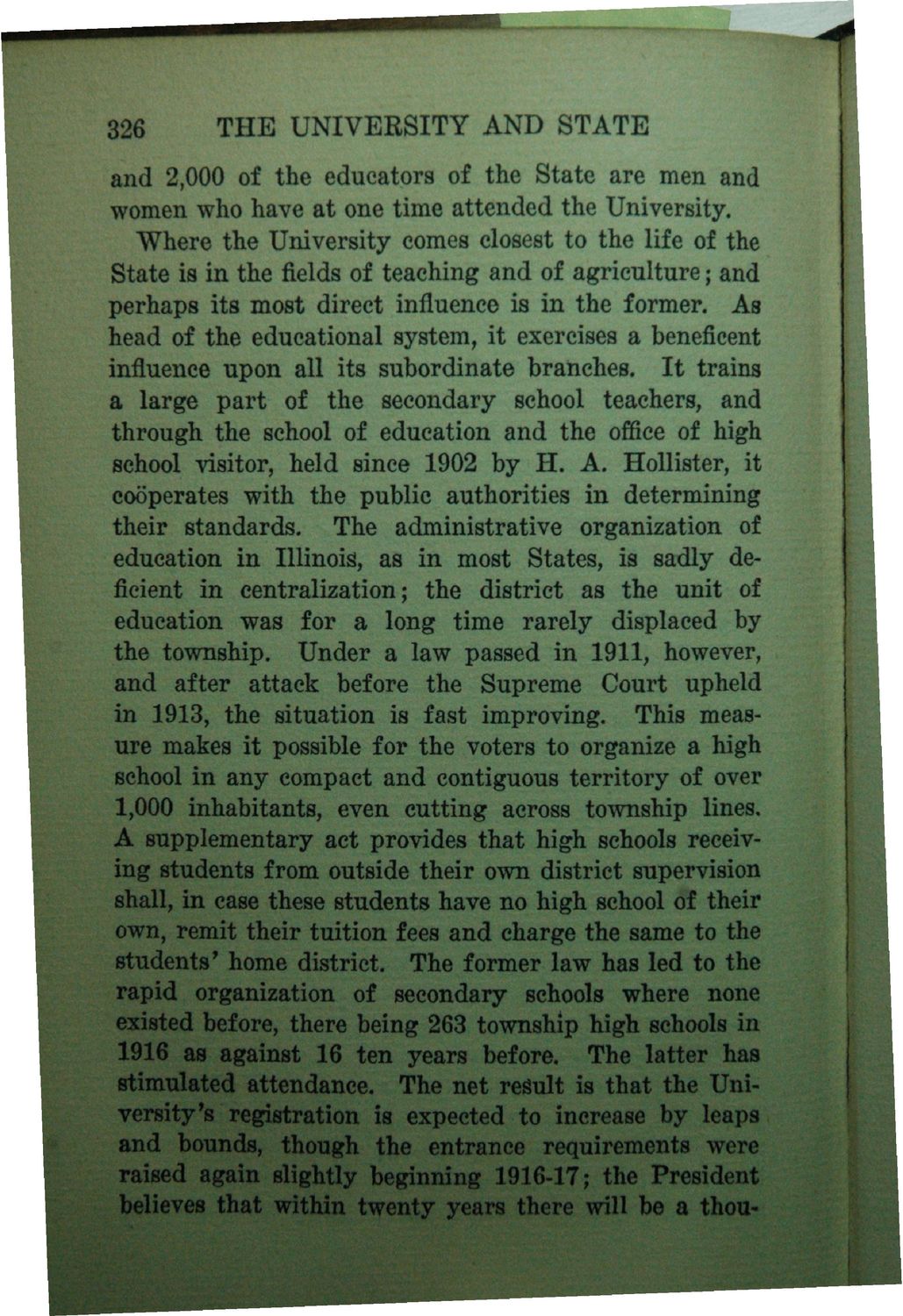| |
| |
Caption: Book - History of the University (Nevins)
This is a reduced-resolution page image for fast online browsing.

EXTRACTED TEXT FROM PAGE:
326 THE UNIVERSITY AND STATE and 2,000 of the educators of the State are men and women who have at one time attended the University. Where the University comes closest to the life of the State is in the fields of teaching and of agriculture; and perhaps its most direct influence is in the former. As head of the educational system, it exercises a beneficent influence upon all its subordinate branches. It trains a large part of the secondary school teachers, and through the school of education and the office of high school visitor, held since 1902 by H. A. Hollister, it cooperates with the public authorities in determining their standards. The administrative organization of education in Illinois, as in most States, is sadly deficient in centralization; the district as the unit of education was for a long time rarely displaced by the township. Under a law passed in 1911, however, and after attack before the Supreme Court upheld in 1913, the situation is fast improving. This measure makes it possible for the voters to organize a high school in any compact and contiguous territory of over 1,000 inhabitants, even cutting across township lines. A supplementary act provides that high schools receiving students from outside their own district supervision shall, in case these students have no high school St their own, remit their tuition fees and charge the same to the students' home district. The former law has led to the rapid organization of secondary schools where none existed before, there being 263 township high schools in 1916 as against 16 ten years before. The latter nas stimulated attendance. The net result is that the University's registration is expected to increase by leaps and bounds, though the entrance requirements were raised again slightly beginning 1916-17; the President believes that within twenty years there will be a thou-
| |